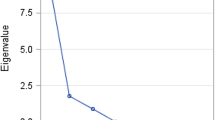Abstract
Background and objective: Various approaches have been employed to derive physical health and mental health summary scores for the SF-36 and the RAND-36, but head-to-head comparisons of alternative scoring algorithms are rare. We determined whether the associations of the physical and mental health summary scores with chronic medical conditions and utilization would differ depending on the scoring algorithm used. Methods: We examined 5701 patients receiving medical care from an independent association of 48 physician groups located primarily in the western United States and compared SF-36 and RAND-36 scoring of physical health and mental health summary scores. Associations with the presence of diabetes, heart disease, and kidney disease, as well as with utilization of medical care and mental health care were compared using bivariate and multivariate analysis. To examine the relationship between SF-36 and RAND-36 scores, we regressed the SF-36 physical and mental health composite scores on the RAND-36 physical and mental health summary measures and vice versa. Results: We found that the SF-36 and RAND-36 summary scores generally yielded results similar to one another across measures of heart disease, diabetes, and kidney disease, as well as measures of utilization. However, for each chronic medical condition, the RAND-36 showed a slightly larger decrement in mental health than did the SF-36. Conclusions: Differences between the two sets of summary scores were consistent with their respective conceptual and analytic approaches. Where comparisons of results between the SF-36 and RAND-36 summary scores are desirable in future studies, they can be estimated using the regression equations derived in this study.
Similar content being viewed by others
References
Wilson IB, Cleary PD. Linking clinical variables with health-related Quality of Life: A conceptual model of patient outcomes. JAMA 1995; 273: 59–65.
Lorenz KA, Shapiro MF, Asch SM, Bozzette SA, Hays RD. Associations of symptoms and health-related quality of life: Findings from a national study of persons with HIV infection. Ann Int Med 2001; 134 (9 Pt 2): 854–860.
Reiser SJ. The era of the patient: Using the experience of illness in shaping the missions of health care. JAMA 1993; 269(8): 1012–1017.
Lachs MS, Feinstein AR, Cooney LM, et al. A simple procedure for general screening for functional disability in elderly patients. Ann Int Med 1990; 112(9): 699–706.
Guyatt GH, Naylor D, Juniper E, Heyland DK, Jaeschke R, Cook DJ. Users' guides to the medical literature. XII. How to use articles about health-related quality of life. JAMA 1997; 277(15): 1232–1237.
Hays RD, Sherbourne CD, Mazel RM. The RAND 36-Item Health Survey 1.0. Health Econ 1993; 2: 217–227.
Hays RD, Stewart AL. The structure of self-reported health in chronic disease patients. Psychol Assess 1990; 2(1): 22–30.
Keller SD, Ware JE Jr, Bentler PM, et al. Use of structural equation modeling to test the construct validity of the SF-36 Health Survey in ten countries: Results from the IQOLA Project. International Quality of Life Assessment. J Clin Epidemiol 1998; 51: 1179–1188.
Hays RD, Marshall GN, Wang EYI, Donald-Sherbourne C. Four-year cross-lagged associations between physical and mental health in the Medical Outcomes Study. J Consult Clin Psychol 1994; 62(3): 441–449.
Ware J, Kosinski M, Keller SD. SF-36 Physical and Mental Health Summary Scales: A User's Manual. Boston, MA: The Health Institute, New England Medical Center, 1994.
Ware JE Jr, Kosinski M, Bayliss MS, McHorney CA, Rogers WH, Raczek A. Comparison of methods for the scoring and statistical analysis of SF-36 health profile and summary measures: Summary of results from the Medical Outcomes Study. Med Care 1995; 33: AS264–AS279.
Hall JA, Epstein AM, McNeil BJ. Multidimensionality of health status in an elderly population: Construct validity of a measurement battery. Med Care 1989; 27(3 Suppl): S168–S177.
Ware J, Davies-Avery A, Brook RH. Conceptualization and Measurement of Health for Adults in the Health Insurance Study. Vol. VI. Analysis of Relationships Among Health Status Measures. Santa Monica, CA: RAND Corporation, 1980.
Nortvedt MW, Riise T, Myhr KM, Nyland HI. Performance of the SF-36, SF-12, and RAND-36 summary scales in a multiple sclerosis population. Med Care 2000; 38: 1022–1028.
Simon GE, Revicki DA, Grothaus LC, Vonkorff M. SF-36 summary scores: Are physical and mental health truly distinct? Med Care 1998; 36: 567–572.
Keller SD, Ware JE. Questions and answers about SF-36 and SF-12. Med Outcomes Trust Bull 1996; 4: 3.
McHorney CA, Ware Jr JE, Raczek A. The MOS 36-item short form health survey (SF-36): II. Psychometric and clinical tests of validity in measuring physical and mental health constructs. Med Care 1993; 31(3): 247–263.
Stewart AL, Greenfield S, Hays RD, et al. Functional status and well-being of patients with chronic conditions: Results from the medical outcomes study. JAMA 1989; 262(7): 907–913.
Kravitz RL, Greenfield S, Rogers W, et al. Differences in the mix of patients among medical specialties and systems of care: Results from the medical outcomes study. JAMA 1992; 267(12): 1617–1623.
Hays RD, Brown JA, Spritzer KL, Dixon WJ, Brook RH. Member ratings of health care provided by 48 physician groups. Arch Int Med 1998; 158: 785–790.
Hays RD, Prince-Embury S, Chen H. R-36 HSI: RAND-36 Health Status Inventory. San Antonio, TX: The Psychological Corporation, 1998.
McDonald RP. Test Theory: A Unified Treatment. Mahwah, New Jersey, 1999.
Tellegen AB-PY. The new uniform T scores for the MMPI-2: Rationale, derivation and appraisal. Psychol Assess 1989; 4: 145–155.
Taft C, Karlsson J, Sullivan M. Do SF-36 summary component scores accurately summarize subscale scores? Qual Life Res 2001; 10: 395–404.
Ware JE, Kosinski M. Interpreting SF-36 summary health measures: A response. Qual Life Res 2001; 10: 405–413; discussion 415-420.
Taft C. Editorial comment: Reply to Drs Ware and Kosinski. Qual Life Res 2001; 10(5): 415–420.
Author information
Authors and Affiliations
Rights and permissions
About this article
Cite this article
Cunningham, W.E., Nakazono, T.T., Tsai, K.L. et al. Do differences in methods for constructing SF-36 physical and mental health summary measures change their associations with chronic medical conditions and utilization?. Qual Life Res 12, 1029–1035 (2003). https://doi.org/10.1023/A:1026191016380
Issue Date:
DOI: https://doi.org/10.1023/A:1026191016380



